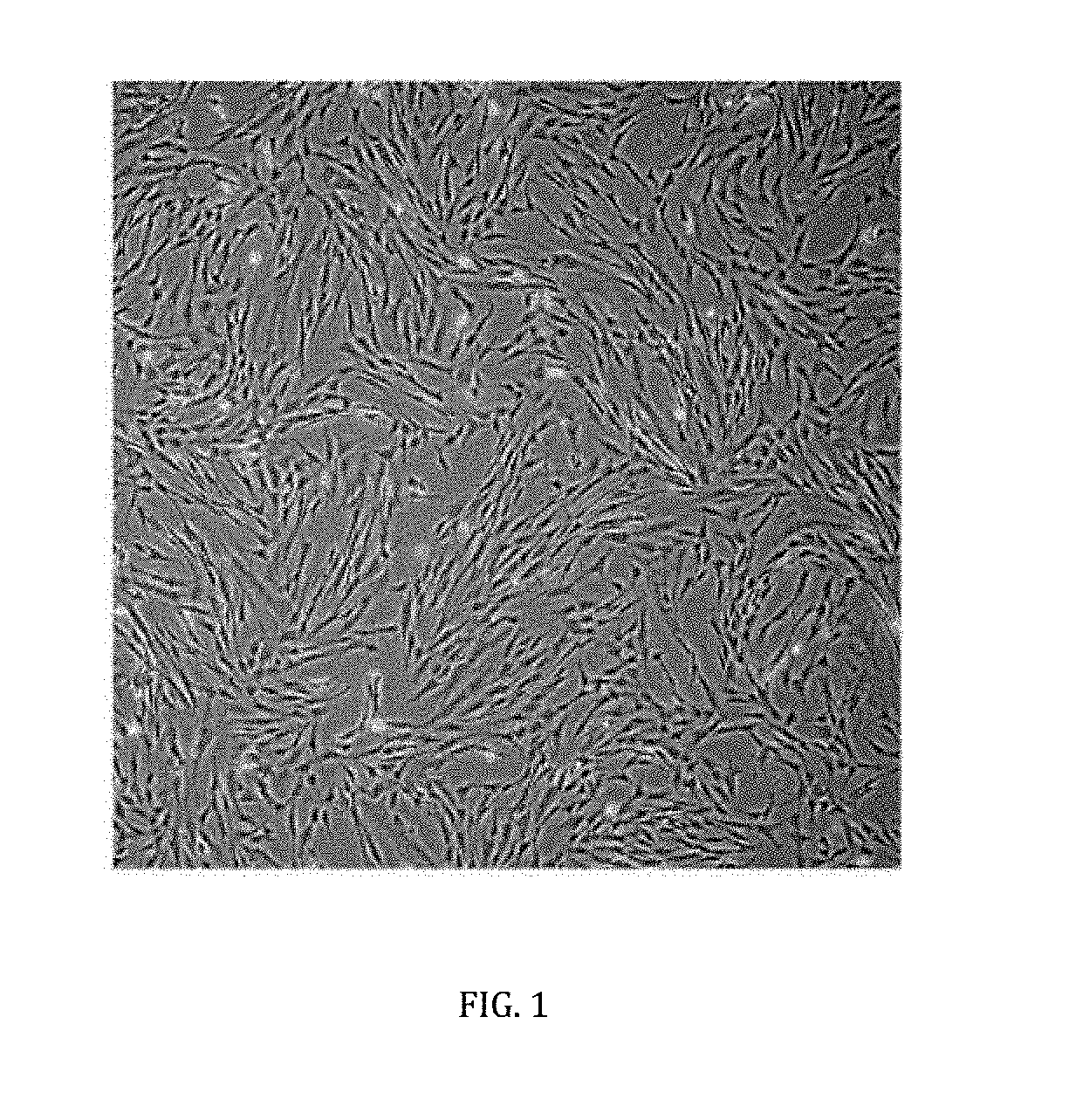Cell-based composition and use thereof for treatment of macular oedema and degeneration
a cell-based composition and macular oedema technology, applied in the field of cell-based composition and use thereof for treating complications arising from diabetic maculopathy, can solve the problems of reducing the loss of vision by around 50%, deteriorating the vision of the eye, and laser treatment not improving the vision
- Summary
- Abstract
- Description
- Claims
- Application Information
AI Technical Summary
Benefits of technology
Problems solved by technology
Method used
Image
Examples
example 1
n and Handling of Umbilical Cord Sample
[0037]The umbilical cord sample was detached from placenta of a donor post-birth using medical scissors and was immediately submerged in povidone iodine solution for 1-5 minutes to eliminate bacteria and to avoid any risk of contamination. Alternatively, the is umbilical may be disinfected using alcohol swab. Upon disinfection, the umbilical cord was then placed in a sterile container of sterile saline solution to maintain moisture. Subsequently, the sterile container was placed into a collection kit and was transported to laboratory using a thermo-insulated bag and kept under a temperature range from 4° C. to 37° C.
[0038]The sample was then processed within 48 hours from time of collection.
example 2
and Culture of Mesenchymal Stem Cells
[0039]First, veins and arteries of the umbilical cord were removed and followed by mincing into 1-2 mm fragments. The fragments were digested with an enzyme, preferably, but not limiting to 0.01% to 0.05% collagenase type II, for a period from 1 to 3 hours, forming a mixture. Next, a centrifugation was carried out to separate the mesenchymal stem cells from the mixture. The mesenchymal stem cells were isolated and then cultured in a growth medium, preferably, but not limiting to Dulbecco's Modified Eagle's Medium (DMEM) which may or may not contain low glucose supplemented with 5-20% animal-free serum and a combination of antibiotics comprising 100 U / mL penicillin, 100 mg / mL streptomycin, 250 ng / mL amphotericin B and 2 mM glutamine. The cultures were maintained at 37° C. in a humidified atmosphere of 5% CO2 and 95% air for 3 days.
[0040]Non-adherent cells were discarded and the growth medium was replaced every 3-4 days until the cells reached conf...
example 3
ization of Mesenchymal Stem Cells
[0043]The mesenchymal stem cells were immunophenotyped at passage three using isotype (fluorescein isothiocyanate) FITC and (phycoerythrin) PE controls with antigen markers which include CD34, CD45, CD73, CD90, CD105 and HLA-DR. As shown in FIG. 2, the immunophenotyping assay results for the mesenchymal stem cells validate expression for CD73, CD90 and CD105 whilst lacking expression for CD34, CD45 and HLA-DR.
Differentiation Assay
[0044]To perform this assay, a selection of specially formulated differentiation medium were used to induce tri-differentiation ability of the mesenchymal stem cells.
[0045]The mesenchymal stem cells were treated in adipogenic differentiation medium comprising complete medium supplemented with 1 mM dexamethasone and 0.2 mM indomethacin, 0.01 mg / mL insulin and 0.5 mM 3-isobutil-1-metil-xantina. The medium was replaced every 3 days, and the differentiated cells were subjected to Oil Red 0 staining ...
PUM
| Property | Measurement | Unit |
|---|---|---|
| temperature | aaaaa | aaaaa |
| temperature | aaaaa | aaaaa |
| temperature | aaaaa | aaaaa |
Abstract
Description
Claims
Application Information
 Login to View More
Login to View More - R&D
- Intellectual Property
- Life Sciences
- Materials
- Tech Scout
- Unparalleled Data Quality
- Higher Quality Content
- 60% Fewer Hallucinations
Browse by: Latest US Patents, China's latest patents, Technical Efficacy Thesaurus, Application Domain, Technology Topic, Popular Technical Reports.
© 2025 PatSnap. All rights reserved.Legal|Privacy policy|Modern Slavery Act Transparency Statement|Sitemap|About US| Contact US: help@patsnap.com



